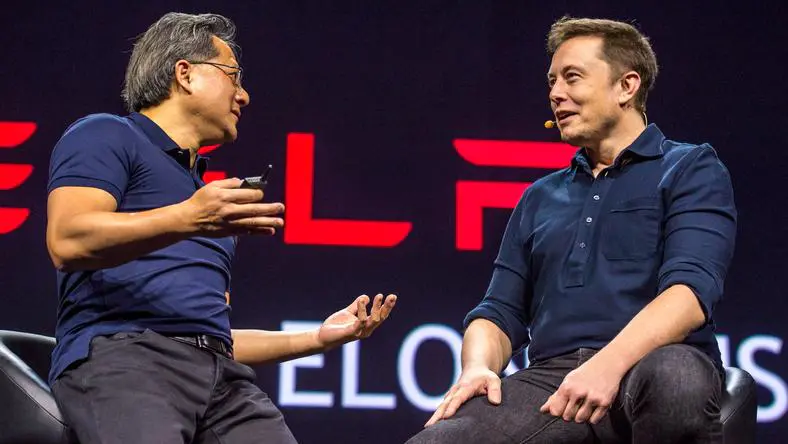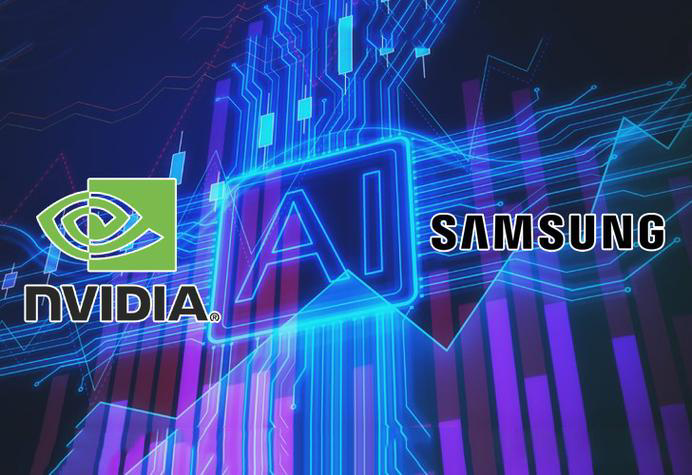On November 6th (Eastern Time), Tesla’s 2025 Annual Shareholders’ Meeting was held as scheduled in Austin, USA. Elon Musk, wearing a black Tesla jacket, stood on the stage and did not hide his joy at all — the “trillion-dollar compensation package” was approved by vote.
Prior to this, there had been intense friction between supporters and opponents among Elon Musk, Tesla’s board of directors, institutional shareholders, retail investors, and other parties. On the surface, it was a battle for a sky-high salary; in essence, it was Musk’s battle to defend his control over Tesla.
The opponents’ concerns are understandable. The “trillion-dollar compensation” is the most aggressive CEO compensation plan in history, and they have no other cases to refer to.
An unavoidable question is: Why don’t CEOs of other tech companies launch “trillion-dollar compensation” plans?
Among them, Jensen Huang, founder and CEO of NVIDIA, is the most striking — his ownership stake in NVIDIA is only 3%, so even though NVIDIA is already the world’s highest-market-cap company, his personal wealth (mainly determined by stock value) only ranks 8th globally.
Why isn’t Jensen Huang following Elon Musk’s lead with the “trillion-dollar compensation package”?
—
I. “Congratulations on no longer working for free.”
A questioner congratulated Musk on stage, who laughed loudly, and the audience erupted in applause.
This was a victory for Musk. At this Tesla shareholders’ meeting, shareholders voted on Musk’s “trillion-dollar compensation package,” which was ultimately approved with a 75% support rate.
This is a 10-year “performance bet” agreement, with 12 layers of goals. Restricted stock accounting for approximately 12% of Tesla’s total share capital will be unlocked in 12 batches as the goals are gradually achieved.
Each layer of goals includes two items: market value and operations. For example, the market value target starts at $2 trillion, increasing by $500 billion per step. The operational goals include delivering 20 million vehicles, reaching 10 million active FSD subscribers, delivering 1 million robots, and putting 1 million Robotaxis into commercial operation.
The final chapter is a market value of $8.5 trillion, an annual adjusted EBITDA (Earnings Before Interest, Taxes, Depreciation, and Amortization) that must ultimately reach $400 billion (maintained for four consecutive quarters), and the submission of Tesla’s CEO succession plan.
Compared to the 2018 vote on the “55 billion-dollar compensation package,” the atmosphere this time was quite different.
At that time, Tesla was facing a survival crisis, with widespread speculation about “bankruptcy,” and Musk’s proposed most aggressive compensation plan in history was regarded as a fantasy. The ultimate goal of that compensation package was for Tesla to reach a market value of $650 billion, which was equivalent to expanding tenfold from its then market value of around $60 billion.
Against this special background, the aggressive “all-or-nothing” plan was also Musk’s shot in the arm for Tesla internally and externally — that he was confident in leading Tesla not only out of the abyss but also achieving tremendous growth.
However, that compensation package was overturned by a judge in Delaware, followed by Tesla’s appeal and the judge upholding the original judgment. To this day, the lawsuit has not been fully settled.
Over the long seven years, Tesla’s market value has exceeded $1 trillion. A new compensation package was born, more aggressive than the previous one, and the way it was promoted was also more intense. It directly addressed one of Musk’s core demands — control.
Musk currently holds a 13% stake in Tesla (excluding restricted stock). If all goals are ultimately achieved, his ownership stake is expected to exceed 25%.
This number is no coincidence. “25%” is the “safety line” for control in Musk’s view, and he believes this proportion is sufficient for him to have enough influence at Tesla.
On the Q3 earnings call, he spoke very bluntly:
“My fundamental concern about how many voting rights I have at Tesla is: If I really build a large robot army, could I be suddenly dismissed in the future?
This is my biggest worry. This so-called ‘compensation’ plan is essentially to address this issue. It’s called compensation, but in reality, I won’t spend the money.”
To push for the “trillion-dollar compensation package,” Musk pulled out all the stops. He not only repeatedly emphasized that he cared not about money but about Tesla’s future and even “the future of human civilization” but also continuously “campaigned” on social media.
A special campaign website was launched, called “Vote Tesla.” Tesla also rarely ran digital ads with the slogan “Tesla’s future is in your hands,” not daring to slack off on retail investors’ votes.
Even Musk threatened to leave Tesla if the “trillion-dollar compensation package” was not approved.
The aggressive battle to defend control also sparked more intense controversy. Regarding the “trillion-dollar compensation,” Tesla’s board chairman publicly supported it, calling on everyone to keep Musk, while the seventh-largest institutional shareholder clearly opposed it (and indeed voted against it). Retail investors were divided, with some supporting Musk and others believing he was “kidnapping” Tesla.
With the just-concluded Tesla shareholders’ meeting, Musk’s battle to defend control has temporarily achieved victory.
—
II. The “trillion-dollar compensation package” was ultimately approved. Musk will still lead Tesla forward, and the ultimate goal of the new chapter is an $8.5 trillion market value.
The opponents’ concerns are understandable. After all, before the “55 billion-dollar sky-high compensation” was proposed back then, there had never been such an aggressive compensation plan. This is a high-stakes bet, not only for Musk but also for Tesla as a whole.
Shareholders were almost put on the spot — either choose to trust Musk and help him achieve “absolute control,” letting him decide Tesla’s future; or choose not to trust Musk, leading Tesla to immediately experience huge volatility. As Morgan Stanley warned before the shareholders’ meeting: If the compensation package is not approved, it may trigger a sell-off of Tesla’s stock, and the stock price may fall by 10%.
They have no cases to refer to, but there are many counterexamples.
Among Silicon Valley tech companies, the most striking counterexample is NVIDIA and Jensen Huang.
At the end of last month, NVIDIA became the world’s first company with a market value exceeding $5 trillion, which is equivalent to the combined GDP of Germany and Japan — quite astonishing, setting a world record directly. Although it has declined slightly recently, NVIDIA still holds the top spot in the world with a market value of $4.83 trillion.
However, in terms of personal wealth, Jensen Huang is far behind Musk.
According to the latest data from the Forbes Real-Time Billionaires List, Musk ranks first with $491.4 billion. The top five also include Larry Ellison (founder of Oracle), Jeff Bezos (founder of Amazon), Larry Page, and Sergey Brin (founders of Google), all with personal wealth exceeding $200 billion.
Jensen Huang, on the other hand, ranks only 8th with a personal wealth of $163.3 billion.
The reason is that both Musk and Huang’s main sources of personal wealth are stocks of their respective companies, and Huang’s ownership stake is simply too low.
Musk currently holds 13% of Tesla’s common stock, 42% of SpaceX, and an even higher stake in xAI.
In contrast, Jensen Huang’s ownership stake in NVIDIA is only 3%. This proportion is not only far lower than Musk’s but also much lower than other “peers.” For example, Ellison holds about 40% of Oracle, and Zuckerberg holds about 13% of Meta.
Huang’s compensation is also not so “wild.” In fiscal year 2025, Huang received only $49.9 million in “salary” from NVIDIA, including a $1.5 million base salary, $38.8 million in stock awards, and $3.5 million in other benefits.
Moreover, the $1.5 million base salary is the first raise NVIDIA has given Huang in ten years.
From the perspective of control, is a 3% ownership stake sufficient?
Huang is NVIDIA’s largest individual shareholder, but when institutional shareholders are included, his ownership stake only ranks fifth. NVIDIA’s largest institutional shareholder, Vanguard Group, holds a 8.73% stake — more than twice Huang’s.
In contrast, Musk is not only Tesla’s largest individual shareholder but also far ahead even when institutional shareholders are included. Among Tesla’s institutional shareholders, Vanguard Group also holds the largest stake, but its holdings in Tesla are only half of Musk’s.
—
III. NVIDIA is already the world’s largest giant by market value. Why isn’t Jensen Huang following the “trillion-dollar compensation” plan?
In other words, why hasn’t Huang launched a “battle to defend control”? Is Musk too anxious, or is Huang too “laid-back”?
Both are founders and CEOs of their companies, with invaluable contributions to their enterprises. Externally, they are also the “faces” and “spokespersons” of their companies.
Huang only holds a 3% stake in NVIDIA, which is obviously not because he is less important to NVIDIA than Musk is to Tesla. Behind this are huge differences in their entrepreneurial experiences, corporate governance philosophies, and the development stages of their enterprises.
In fact, when NVIDIA was founded in 1993, Huang held a 12.8% stake until before its IPO in 1999.
If calculated based on this ownership stake and NVIDIA’s current stock price, Huang alone would have $500 billion, and he might now be the world’s richest man instead of Musk.
However, after the IPO, Huang’s ownership stake in NVIDIA has been declining.
Documents show that his stake quickly dropped to 9.9% after NVIDIA’s IPO in 1999, fell to 7.1% in 2003, dropped again to 4.4% in 2010, and has remained stable between 3.5% and 4% from 2020 to this summer.
Business Insider pointed out that Huang’s ownership stake has dropped by more than two-thirds, mainly because NVIDIA issued a large number of stocks to provide equity incentives to employees.
For example, NVIDIA reported that as of July 27, its unrecognized stock option incentives amounted to $14 billion, most of which are expected to be recognized over about two years.
In fact, many companies, especially tech companies, reward employees with stocks or stock options to motivate them to increase the company’s value and stock price, while preventing them from jumping to competitors.
This is a way to attract and retain talent without spending cash. It’s just that Huang “gave away” quite a lot.
In other words, Huang’s pitifully low ownership stake compared to his peers is largely used to “spoil” employees.
After his net worth exceeded $100 billion this year, Huang proudly stated in a podcast that his management team has produced more billionaires than any other CEO in the world.
He said: “I still review everyone’s compensation to this day. I carefully review all 42,000 employees, and each time it increases the company’s operating expenses. The reason is simple: if you treat your employees well, everything else will fall into place.”
One wants absolute control, and the other emphasizes “everyone’s success is true success.” It cannot be simply attributed to who is more noble.
On the one hand, different past experiences have shaped different mindsets.
Musk has experienced the loss of “control” in his early days at PayPal and even OpenAI. Those stories have been widely discussed by the outside world. He does not want to taste those hardships again.
For Huang, NVIDIA is his first entrepreneurial venture, and he does not have the same “once bitten, twice shy” anxiety as Musk. Furthermore, over the years, Huang’s style of doing things has cleverly balanced high-profile and low-key — bold but not arrogant, aggressive but not combative. He himself is not a controversial figure.
Musk often has shareholders popping up behind him shouting that Tesla needs a new CEO, but Huang has no such troubles.
On the other hand, Tesla and NVIDIA are in completely different development stages.
Tesla is in a painful period of transformation. In addition to developing new models and vigorously promoting Robotaxi, Musk has repeatedly emphasized the importance of AI and robot businesses. During this shareholders’ meeting, several Optimus robots stood on both sides of the stage — this was not only Musk’s another opportunity to showcase externally but also his internal statement of determination to develop innovative businesses such as robots.
Transformation is bound to bring friction. Therefore, Musk has repeatedly mentioned that he is worried about being dismissed by Tesla while he is building a robot army. Hence, he threatened that if the “trillion-dollar compensation” is not approved, he will start a new venture to engage in these new businesses instead of doing them at Tesla.
NVIDIA is completely different. This emerging giant that achieved “class leap” due to artificial intelligence is still sprinting along the established path. Artificial intelligence remains the core.
While Tesla was about to hold its shareholders’ meeting and Musk was promoting the “trillion-dollar compensation,” Huang was attending a summit hosted by the Financial Times and stated that “China will win the artificial intelligence race.” Behind this statement was also a warning to U.S. regulators, reminding them that their attempt to restrict China’s AI development by limiting the export of NVIDIA’s high-end chips may backfire.
In recent months, NVIDIA has also made frequent moves, reaching large-scale cooperation with Oracle, OpenAI, etc., to jointly expand the artificial intelligence market.
Combating external risks, expanding the coverage of NVIDIA’s products, and consolidating NVIDIA’s position in the field of artificial intelligence are Huang’s top priorities at present, not internal control.
At this stage, Huang does not want or need a “trillion-dollar compensation” to consolidate internal control.
Recently, Wall Street has collectively raised its outlook on NVIDIA. According to the upgraded target stock price of NVIDIA by U.S. investment bank Loop Capital Markets, they believe its market value is expected to exceed $8.5 trillion. This number coincides with the ultimate target market value of Tesla in Musk’s “trillion-dollar compensation” plan.
However, the flip side of NVIDIA’s continued rapid growth is the fermentation of the “AI bubble theory.” In particular, the “internal circulation” transactions full of interest exchanges between NVIDIA, OpenAI, and Oracle have made the outside world question that tech companies are jointly inflating the bubble.
The other side of “win-win” may be “lose-lose.” If NVIDIA’s bubble bursts, what will Huang lose?
Whether Musk is too anxious or Huang is too “laid-back” remains an open question.















暂无评论内容